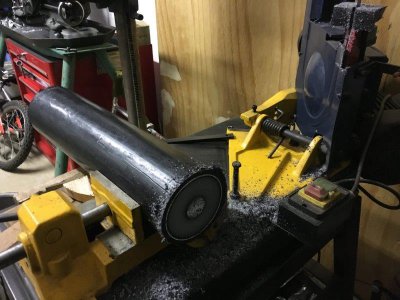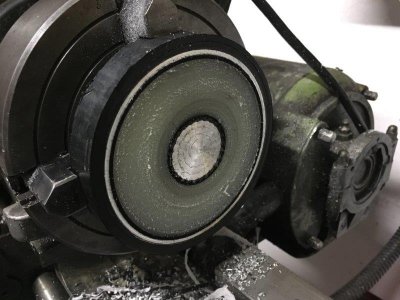- Joined
- Jun 26, 2014
- Messages
- 619
I am trying to make some sample/souvenirs from an offcut of large power cable we are installing at work. Think coasters made out of thin slices. It cuts OK on the bandsaw (and I may end up leaving it at that) but I was going to try and get a better finish by either facing it off in the lathe of running a large endmill over it in the mill.
Cable is 400kV, 630mm² stranded aluminium conductor with XLPE (cross linked polyethylene) insulation.

Have had a try facing it on the lathe but I'm not getting a good finish. The XLPE (large white coloured area) doesn't come off as strands but stays as a thin disc no mater how thin a cut I take, and the stranded aluminium in the center 'smears' so that the individual strand are not nicely defined.

The tool was a bit old so will try again once it is freshly sharpened, but would be interested in any other suggestion from people with experience machining soft type plastics.
Cable is 400kV, 630mm² stranded aluminium conductor with XLPE (cross linked polyethylene) insulation.

Have had a try facing it on the lathe but I'm not getting a good finish. The XLPE (large white coloured area) doesn't come off as strands but stays as a thin disc no mater how thin a cut I take, and the stranded aluminium in the center 'smears' so that the individual strand are not nicely defined.

The tool was a bit old so will try again once it is freshly sharpened, but would be interested in any other suggestion from people with experience machining soft type plastics.

